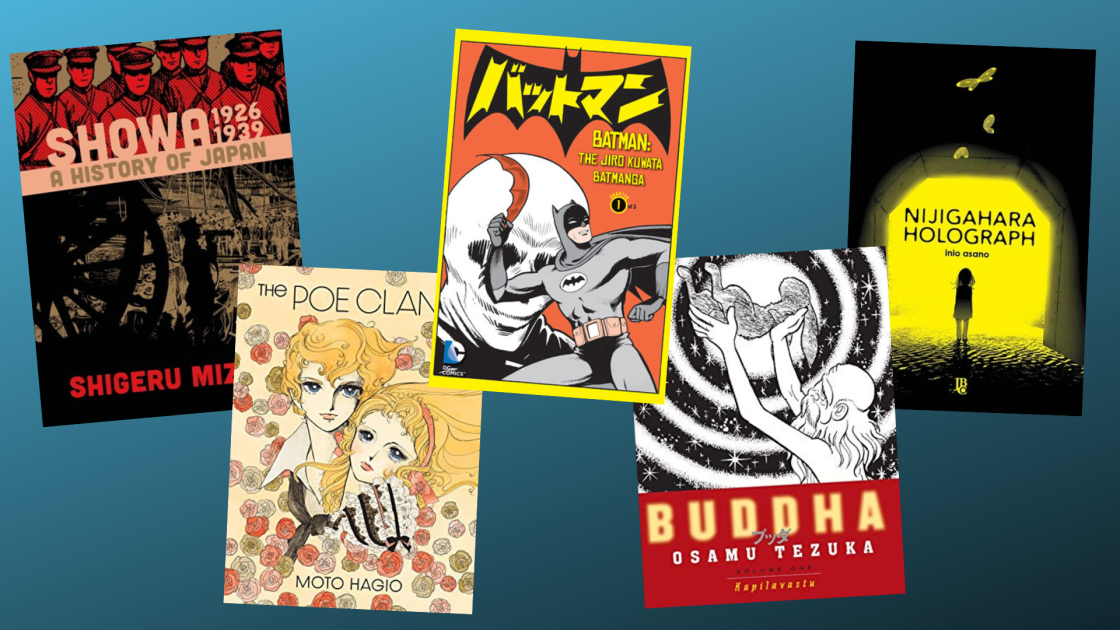
February is graphic novel month. To celebrate, I was asked to write a blog post on our collection of Japanese graphic novels.
Japan has a long history of comics and graphic novels. These Japanese comics, which are frequently referred to by the Japanese term manga, are much more ubiquitous in Japan than comic books in America and can be much more popular as well. Manga series can run for more than a decade, all carefully written and crafted by a single writer, who is often also the lead artist. The most popular series will often cross over into other areas of popular culture, inspiring animated or live action TV shows and movies, books, stage shows, and will sometimes be licensed for use in advertising campaigns or product branding.
There is a diversity in manga in terms of subject and target audience. There is manga exclusively for young children, for middle and high school boys and girls (often called shonen and shojo manga respectively), and even comics targeted specifically at adults. There are also a wide variety of genres within manga, ranging from superhero, action, and horror, to slice of life, coming-of-age, and romance books.
The library has a good selection of manga in both the youth library and the adult library. Many of these are well known series that may already be familiar for new readers such as Fullmetal Alchemist, Fruits Basket, Dragon Ball Z, and Naruto. There are even more available from other libraries by request.
For this blog post I decided to focus on selections from the library that may be less well known. Some are from influential authors, but are not their most popular titles in terms of sales. Others had interesting topics. A few were chosen just because they stood out on the shelf or seemed weird. If you haven’t read manga before, hopefully you will find some of these interesting and decide to pick them up, and if you have, hopefully this will inspire you to check out a new title or branch out from what you have typically read.

Buddha (Vol. 1)
Osamu Tezuka
I had been wanting to read the Buddha series for a while after seeing it on the shelf at the library. Part of the reason I wanted to pick it up was an interest in learning more about Buddhism, but more than that, the author’s name caught my eye. Osamu Tezuka is often known as “the godfather of Manga” and is seen as being the equivalent of Walt Disney in Japan. He is known for a number of comics and animated television shows that were extremely popular in Japan and were even imported to the U.S. including Astro Boy, Kimba the White Lion, Unico, and Black Jack. However, I had never heard of his Buddha series, which is unfortunate because the manga won multiple awards and demonstrated its continued relevance in Japan when it was adapted into two animated films in the 2010s.
The Buddha series tells the story of Siddhartha Gautama’s life. It contains factual information and actual historical figures important in the Buddha’s life while also weaving in fictional characters of Tezuka’s creation to help illustrate themes or add action and humor to what may otherwise be slow moving portions of the story. The first volume follows a number of different characters leading up to the Buddha’s birth, including monk searching for the Buddha, a group of outcasts and slaves trying to improve their lives, and the parents of the Buddha preparing for his birth.
I am definitely still intending on reading the rest of the series, but the first volume is a difficult read. The volume is largely intended to demonstrate the suffering and misery of life of the commoners in the region before the Buddha brought enlightenment. It depicts slaves and outcasts and their daily suffering, famine, hunger, war and death. The volume definitely succeeds in its mission and makes the reader feel the suffering of the characters, but it is also a somewhat depressing experience.
The book has amazing artwork that makes enduring the misery in the story worthwhile. I have to admit I have never really been a fan of Tezuka’s art style, as I often find his character designs to look a little bit goofy. That still holds true for me in relation to many of the human characters and even the animals in the book, but there are some truly amazing scenes depicting the environment of the Himalaya Mountains and miracles surrounding the birth of the Buddha. One panel of the baby Buddha surrounded by flowers is truly an example of the beauty that can be found in manga.
Check Availability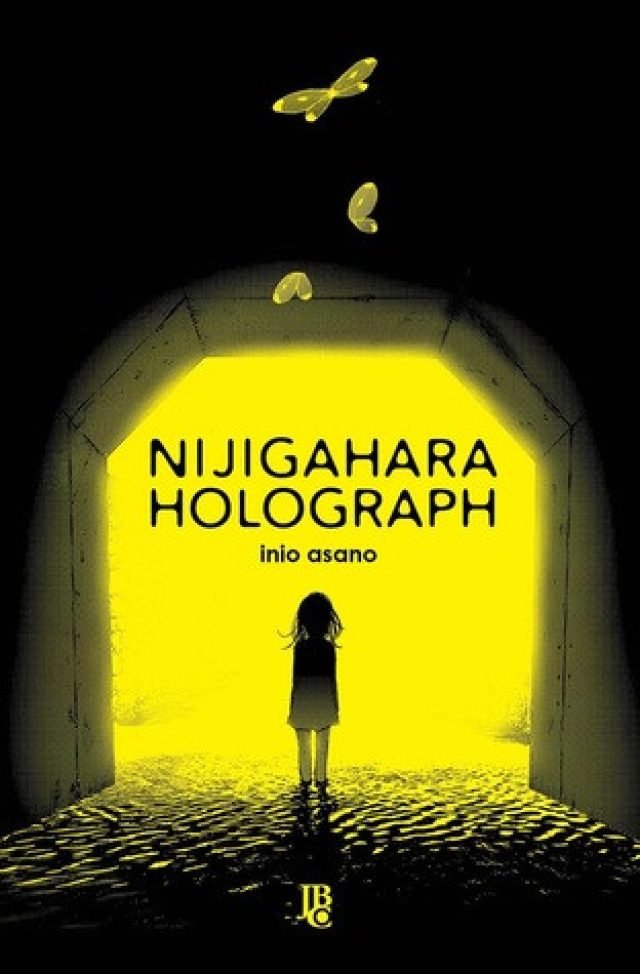
Nijigahara Holograph
Inio Asano
I picked up Nijigahara Holograph as I wanted to highlight a variety of genres and this was classified as a horror manga targeted for adult audiences. In addition to this, it is entirely self-contained with the entire story appearing in one volume. This means a reader gets the full story and experience without having to commit to reading multiple volumes, which I thought might appeal to some people more hesitant to pick up a longer series.
This book is difficult to describe or summarize. Generally, it tells the story of a group of classmates who, in elementary, pushed a girl down a well in an act of bullying. To be able to tell you much more than that would require explaining the entire book and eliminating all of the mystery. Additionally, any summary of the story will fail to fully do it justice. The book is told in a non-linear style which helps to keep the book suspenseful and adds to the creepy atmosphere. Unfortunately, it also makes reading the book fairly confusing, with events taking place in two different time periods that are cut together, a number of time loops happen throughout the book, and even there are even detailed sections that take place in the characters’ imagination. This can make keeping track of significant events difficult. In addition to this, there are several sections where characters are introduced and it isn’t clear for a while how they connect to the story line and other characters. This is one of the few manga I have read where I immediately googled the book to look for reviews and explanations of what happened.
The best description I can come up with for this book is that it is like a combination of David Lynch’s movies and Stephen King’s writing. Much like Lynch’s most notable work, the story is told in a confusing, non-linear style, featuring a number of dark and bizarre images that take time to piece together, if they ever come together at all. At the same time, it features a number of themes and horror elements similar to Stephen King’s work, such as childhood bullying, dealing with childhood trauma, and the true horror lying in the behavior of human characters. While technically a horror story, I personally didn’t really find this that scary. “Creepy” is probably a more accurate descriptor for me as there were a number of sections with disturbing content. While there are supernatural horror elements, what stuck with me more was how the characters treated one another, and the physical, mental, and sexual trauma the characters inflicted on one another.
The art in this book is fairly standard for manga, although I found it to be detailed and well executed. The characters are all well designed and which made it easy for me to keep track of who is who even when going from childhood to adulthood. Additionally, the characters are all expressive and convey emotion well, a point for which the book has received praise from multiple sources.
Check Availability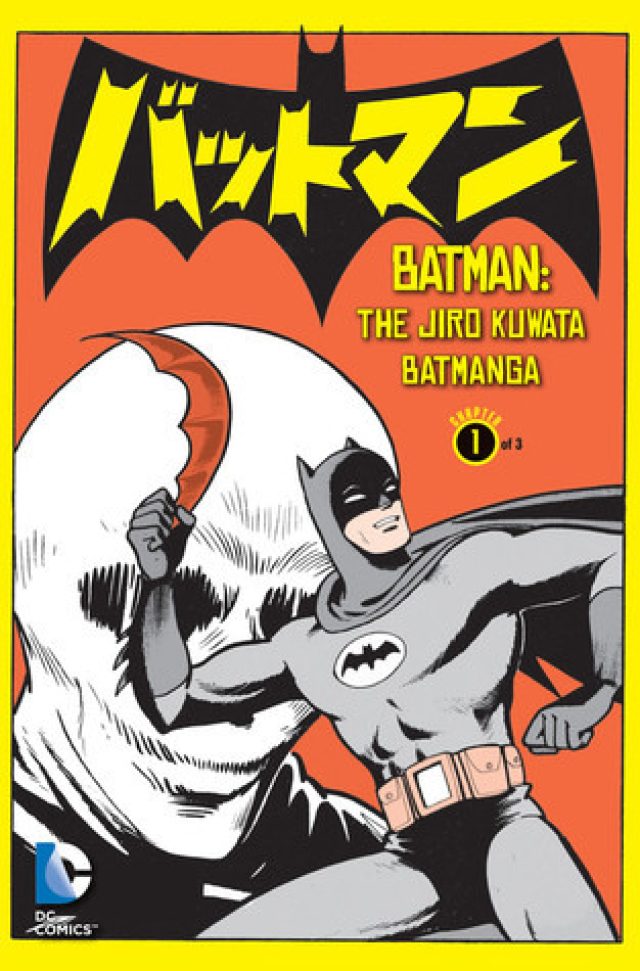
Batman: The Jiro Kuwata Batmanga
Jiro Kuwata
Batman caught my eye while looking for titles simply from the sheer oddity of a 1960s Japanese comic book version of the character. Prompted largely by the hit TV series, Batman became an international sensation and started to get attention in Japan. To capitalize on this, a comic publisher licensed Batman and started to publish their own comic series and thus was born Jiro Kuwata’s Batman comic, also sometimes called the Batmanga.
This volume contains a number of stories where Batman confronts a different enemies in each section. Usually the stories are told over 3 chapters. If you are familiar with the old TV show, you probably know how the stories will play out in the manga: A villain appears, Batman tries to stop the villain and gets beat, Batman figures out the villain’s secret plan or identity (usually by a random coincidence), and then Batman beats the villain in the final act.
Unfortunately, I found the book gets pretty repetitive and is more interesting as a study in cultural exchange than as a graphic novel. The stories generally stuck to the same formula and there was little depth or surprise to any of them. The villains were all new characters and many fit the mold of traditional Batman villains well, but they don’t get to stick around long enough to become iconic foes like the Joker or the Riddler. It is still interesting to see how some of the key elements of Batman were interpreted in another culture (for example, seeing a Japanese take on Batman’s gadgets or the cultural influence behind some of the villains) but overall it is a little disappointing.
The art and character designs in the book are clearly influenced by the legacy of the Batman TV show and comics in the 1960s. Mostly the art is fine, although nothing amazing. It clearly conveys what is happening, but will not awe you. The few exceptions to this are in some of the “full color” pages, mostly done in white, black, and red, that show how effect a small pop of color in an otherwise black and white book can be in adding excitement and interest to a page.
Check Availability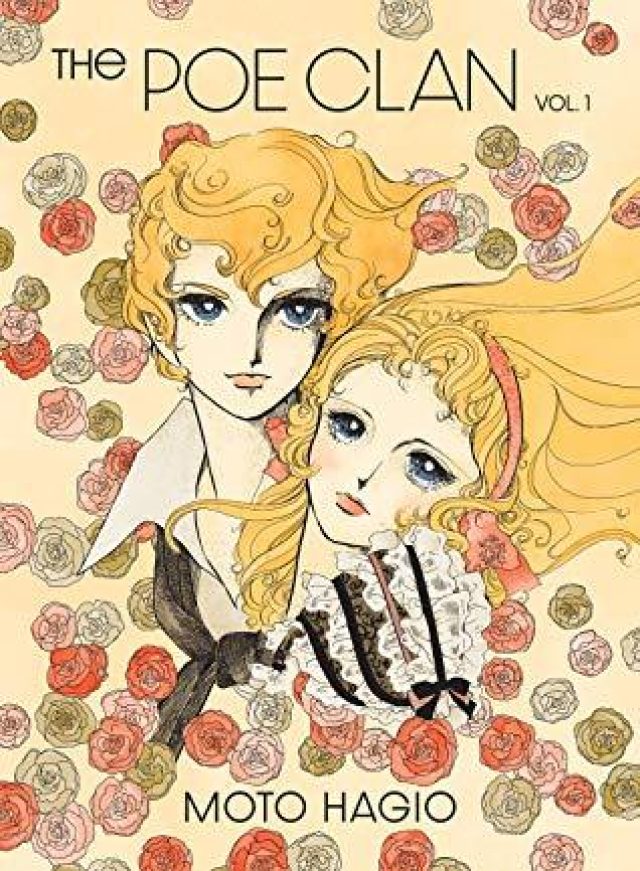
The Poe Clan
Moto Hagio
The Poe Clan is another book that I picked up in order to highlight a diversity of genres and to give readers options to find a book which may interest them. I found this book while looking for a manga targeted to a female audience.
The book follows a brother and sister who, after being abandoned by their parents, are turned into vampires (or “vampirnellas” as they are called in the book). By exploring their lives and the lives of those who they meet and impact, the book examines a number of topics, including life, death, beauty, and age. The book contains a number of vignettes from the lives of the two central characters and their parents, ranging from the brother’s induction into the vampire clan to recruiting trips to find new humans to turn into vampires. Throughout it all the characters form connections and relationships to the people, often with tragic consequence for both the vampires and the humans.
I honestly have found this book much more interesting than I was expecting. Manga for women isn’t generally my favorite as I find it plays too much into gender stereotypes or basic elements of the romance genre. The Poe Clan, while it does contain a number of these gender stereotypes, tends to subvert a lot of the elements I find to be annoying through the tragic themes presented. The more I read, however, the more I found myself wanting to know more about the characters, what drives them, and their motivations.
I found the art in the book to be well executed and many pages feature some beautiful panels. I also found it interesting as it portrayed a number of elements I don’t commonly see in my personal reading selections. I particularly found the fashion displayed in the book fairly interesting. Portions of the book span over 200 years, and each time period has different fashion represented in detail in the text. The people from the 1860s look and dress like they are from the 1860s and the people from the 1950s look and dress like people from the 1950s.
Check Availability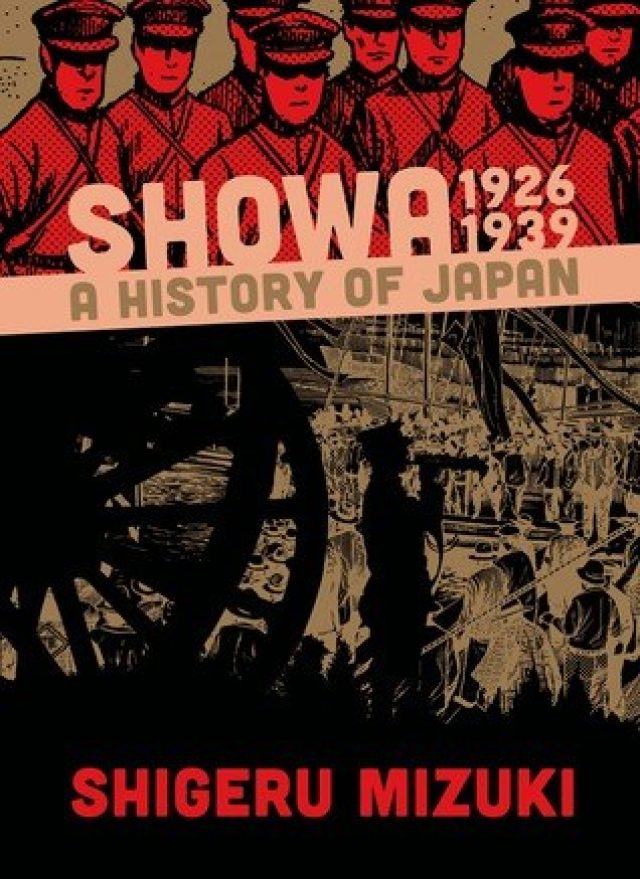
Showa: A History of Japan, 1926-1939
Shigeru Mizuki
This series stands out as unique for a number of reasons. The first is that you will have to venture into the youth library to find this book (or if you aren’t comfortable with that, you can place a request or have one of our friendly circulation staff to retrieve the book for you). The second is that this book was originally published as a book instead of serialized in a magazine, as is standard for most manga. The third is that this book is a rare instance of a non-fiction manga book.
The first volume of Showa details the early portion of the Showa era in Japan. The Japanese tend to refer to time periods by the honorific name given the Emperor who ruled during that time. Thus, the Showa era is the time period when the Emperor Showa (known in the West by his birth name Hirohito) was the head of state for Japan. While the Showa era marks a nostalgic or old-fashioned good-old-days time period for many Japanese people today, the early years of the era were actually quite tumultuous, marred by a disastrous earthquake, financial troubles, the rise of right wing extremists, and a number of armed conflicts leading up to WWII.
This book details those times mixing multiple perspectives. Portions of the book are a straight factual, historical description of events, dates, and their significance. These sections even have an appendix with additional details on people or terms used in text. Other portions are framed as debates or discussions between adults in the book discussing events of the time period. These serve to give the reader a picture into the public opinion and worries of the time period. Finally, some sections are a life history of the author detailing his personal experiences and opinions in the time period, following him from being a young child not even in school through his teenage years. These sections provide both personal details and the impact of government action and propaganda on a person.
I am a history buff, so I have really enjoyed reading this book. While I am familiar with some of Japanese history, I learned a lot more than I was expecting and realized I was unfamiliar with the state of events leading up to WWII in Japan. I found myself wanting to read the next volume to learn more about the history, what the author did during WWII, and how the author ended up becoming a manga artist and author. If you enjoy history, you would likely find Showa interesting as well.
The book used a variety of different art styles to good effect. Essentially, by following the art style the author uses, the reader will know what type of information is being related. The factual, historical portions of the book use a hyper-realistic art style, in some cases reproducing famous photos that would appear in standard Japanese textbooks. The sections dealing with the author’s childhood and personal experiences, however, are drawn in a much more “cartoon-y” style, almost like a newspaper comic strip. In some ways this helps to give the reader context. It gives the big, important, or serious issues of politics and history like assassinations or changes in government a weight simply through the more serious art style. In contrast the more mundane or silly concerns of childhood, like wandering the woods or getting into a fight are kept less serious through the art style, (although the “serious” history in the book quickly starts impacting the author’s childhood).
Check Availability
About the Author
Nathanael enjoys comics, movies, sci-fi, and other generally geeky things.
